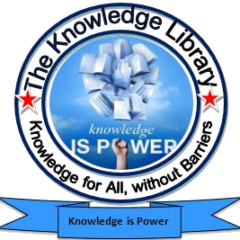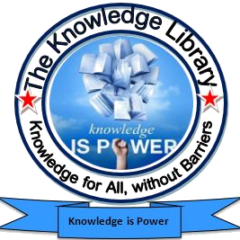Paper – III
(Technology, Economic Development, Bio-diversity, Environment, Security and Disaster Management)
Information Technology
Information technology, also called “IT’ in short form is a common term that includes all forms of technology used to create, store, exchange, and use information in various forms. The phrase Information Technology was created by Jim Domsic of Michigan in November 1981 to modernize the out-of-date “data processing” tools. In contemporary technical environment, information technology has vital role to perform numerous human activities and business operations. Basically, Information technology is the study and use of systems for storing, retrieving, and sending information. This comprises of software, hardware, and applications. Information technology assists in arena of Business, education, and even healthcare.
Different professionals defined information technology in various ways. According to Information Technology Association of America (ITAA), information technology is “the study, design, development, implementation, support or management of computer-based information systems, particularly software applications and computer hardware.” It deals with the use of electronic computers and computer software to convert, store, protect, process, transmit and retrieve information, securely. The British Department of Industry described information technology as science of information handling, particularly by computers, used to support the communication of knowledge in technical, economic and social fields. It elaborates IT as, the acquisition, processing, storage and dissemination of vocal, pictorial, textual and numerical information by microelectronics based combination of computing and tele communication. UNESCO explains information technology as a scientific technology and engineering disciplines and the management techniques used in information handling and processing their application, computers and their interaction with men and machines and associated social, economic and cultural matters.
The rudimentary concept of Information Technology can be drawn from World War II association of the military and industry in the development of electronics, computers, and information theory. After the 1940s, the military continued to be the major source of research and development funding for the growth of automation to replace manpower with machine power. Since the 1950s, four generations of computers have progressed. Each generation reflected a change to hardware of decreased size but increased capabilities to control computer operations. The first generation used vacuum tubes, the second used transistors, the third used integrated circuits, and the fourth used integrated circuits on a single computer chip. Progression in artificial intelligence will diminish the need for complex programming characterize the fifth generation of computers.
Computer Generations

Reports indicated that the first marketable computer was the UNIVAC I, developed by John Eckert and John W. Mauchly in 1951. It was used by the Census Bureau to predict the outcome of the 1952 presidential election. In next decades, mainframe computers were used in big corporations to do calculations and manipulate large amounts of information stored in databases. Supercomputers were used in science and engineering, for designing aircraft and nuclear reactors, and for predicting worldwide weather patterns. Minicomputers came on to the scene in the early 1980s in small businesses, manufacturing plants, and factories.
In 1975, the Massachusetts Institute of Technology developed microcomputers. The market for microcomputers increased radically when IBM introduced the first personal computer in the fall of 1981. Since then, there is rapid growth in computer components and manufacturing and personal computers are widely used by consumers than the largest computers of the mid-1960s at about a thousandth of the cost.
Major objectives of information technology is to give effective channels of information of data messages in the form of written or printed records, electric, audio or video signals by using wires, cables and telecommunication techniques. Information technology has significant role in information handling due to developments such as reduction in computing time, capabilities of files on video discs, use of Television as convenient information screen, telecommunication and satellite communication facilities.
Components of Information Technology
Information technology is classified into many groups:
Computer Technology
Since last decades, there is extensive use of computer technology that has made immense growth in the information transmission processes in every field of human endeavour. Computers are capable of performing a series of operations according to a set of logical instructions with utmost speed. Its storage capacity facilitates access to billions of characters of data in the storage and retrieval of vast and ever increasing information. Currently, enormous developments in computer and communication technologies enable smooth functions of information management.
Communication technology: Recently, extensive growth of information technology has changed the communication conscious human society into, an information global community. The advanced technologies such as the laser, fibre optics, telephone, television, dictaphone, silicon chip, Internet and many other telecommunication devices have come to constitute an important and expected component of written and oral communication media network.
Telecommunication technology: Telecommunications are strategies and systems used for transmission of information over long distances via wire, radio/satellite without damaging/loss due to noise and interference. Telecommunication is an area of Information Technology, which is currently experiencing drastic change. Initiation of Computer Technology, IT and communication technology has revolutionized the activities information system.
Optical communication systems: Optical communications are a recent development in the field of telecommunication systems. Their main uses are in long distance digital networks. Here light is the carrier of information and optical fibres are the medium of transmitting the light signals. Optical fibre transmission has come of age as a major innovation in the telecommunications.
Satellite communication technology: Satellite communication is one of most popularly extensively used technology now a days.
It can be represented in studies that business field is changed with the development of computers. Using computers and software, businesses use information technology to make sure that their departments run efficiently. They use information technology in many departments including human resources, finance, manufacturing, and security. Using information technology, businesses have the ability to view changes in the world-wide markets far faster than they usually do. Huge business companies have their own information technology department designed to maintain the software and hardware.
Information technology Industry in India: Information Technology is growing sector of the Indian Economy. The Indian IT industry evolved under very adverse conditions. In earlier time, there were no local markets and government policy toward private enterprise was antagonistic. The Indian IT Industry started by Bombay-based conglomerates that entered the business by supplying programmers to global IT firms located in foreign. In the decade of 1970’s, the Indian economy was state-controlled and remained hostile to the software industry. The Indian Information Technology industry has contributed a lot to enhance the status at global level. With great success of the IT industry, India is progressing in many sectors. In India, Metropolitan Cities such as Bangalore, Mumbai, Delhi, Chennai and Hyderabad have established numerous IT companies HSBC, Dell, Microsoft, GE, Hewlett Packard, and several Indian multinational firms like Infosys Technologies, Wipro. As these cities offer good infrastructure, with large floor space and great telecom facilities. India’s Information Technology sector comprises of two parts. First is the software sector, and second is the IT-enabled sector (ITES).
Many of the global IT companies have development centres in India where various new products are being designed. India’s most prized resource in today’s knowledge economy is its readily available technical work force. India has the second largest English-speaking scientific specialists in the world.
There is a huge scope of IT Industry in India. IT provides employment, generates foreign exchange, beneficial to other countries, results in more off shoring, increases employees job commitment, financial assistance and Government Support.
The remarkable growth of the Indian IT Software and Services, IT Enabled Services (ITES) and Business Process Outsourcing (BPO) sector have great effect on the Indian economy. It has direct positive impact on national income and the sector has grown to become the biggest employment generator, and has produced the growing of several subsidiary industries such as transportation, real estate and catering, and has created young consumers.
IT-Enabled Services: IT-enabled services utilize information technology to make the provision of services possible. For example in Customer call centres, Indians have been training to speak with American accents, in order to deal with customer queries from the US. NASSCOM provides a categorization of 10 different types of IT-enabled services.
Table: IT-Enabled Services Types
- Customer Interaction Services
- Business Process Outsourcing / Management, Back Office Operations
- Insurance Claims Processing
- Medical Transcription
- Legal Databases
- Digital Content
- Online Education
- Data Digitization / GIS
- Payroll / HR Services
- Website Services
Applications of Information Technology
Customers use computers in novel ways. Computers and other electronic devices are becoming increasingly inexpensive in technically changing world. They continue to be more powerful as information-processing tools as well as easier to use. Humans are constantly becoming dependant on IT-enabled devices to perform even simple tasks like remembering a phone number as well as complicated activities. Information Technology has many applications in all sectors.
Science and Engineering: Scientific development is almost entirely dependent on the use of computers and other microprocessor-controlled devices. For example, using supercomputers, meteorologists predict future weather by using a combination of observations of weather conditions from many sources. Computer-aided design (CAD) and computer-aided manufacturing (CAM) programs have led to improved products in many fields, especially where designs tend to be very detailed. Computer programs enable engineers to analyse designs of complex structures such as power plants and space stations.
Business and Commerce: Major applications of computers is to keep and manage business and financial records. Most big companies keep the employment records of all their workers in large databases that are managed by computer programs. Similar programs and databases are used in business functions like billing customers; tracking payments received and payments to be made; and tracking supplies needed and items produced, stored, shipped, and sold.
With today’s sophisticated hardware, software, and communications technologies, it is often difficult to categorize a system as belonging exclusively to one specific application program. Organizations increasingly are consolidating their information needs into a single, integrated information system.
Education: Development of Information Technology has enabled the people to gain more knowledge and education. With computer literacy, users get more options of jobs. Computer education is an essential course at the primary level in most schools across the world. With more information getting digitized every day, and the internet making it accessible to anyone across the world, students are increasingly relying on electronic sources of information rather than physical libraries for their needs.
Governance: The notion of e-governance is new applications of Information Technology which has changed the life of global populace around the world. Computerization of Government activities makes it easier to supervise and audit, and makes the administration more responsive to the needs of society. It also bridges the divide between the Government and the people. India use IT for managing elections.
Medicine: Information Technology has immense importance in the field medicine. MRI is the best example. A computer then combines the pictures to produce detailed three-dimensional images of the body’s organs. Additionally, the MRI produces images that show changes in body chemistry and blood flow. Most critical life support equipment are programmed to respond to changes in the patient’s status in split-seconds, thereby reducing the response time and risk of human error. Novel ideas such as robotic surgery enable specialists to perform surgeries from remote locations. Genomic studies greatly depend on supercomputing power to develop technologies for the future.
Entertainment: Information technology also impacted greatly the entertainment industry. It changed the lifestyle of people. The convergence of various technologies has created various options for entertainment like games, streaming music and video, digital television broadcasts, satellite radio, animated movies which can be accessed with the help of mobile phones, PDAs, notebook computers or on television either with a cable connection or wirelessly using newer-generation WiFi, WCDMA or 4G technologies.
Advantages: Advantages of information technology in Business are many:
- Increases production and saves time: Many businesses use technology to mechanise tasks.
- Improves communication through communication technology: It is observed that with information technology devices such as communication technology of phones, video conferencing, electronic mail, databases, it has become easy to perform business operations. Employees can easily move information across departments without having any interruptions.
- Improves data storage and file management: Today business use cloud hosting services to store and backup business data. Also, information technology saves on paper work and makes transfer and access of data from remote location.
- Improves financial management.
- Cuts costs of operation and increases on RIO: Communication technology and social technology have made business advancement and product launch inexpensive. Numerous small scale business companies explored ways to use social technology to increase on their brand awareness and get more clients at a minimal cost. In business, cost of operation has major role in the development and growth of that business. So when businesses use information technology to curtail costs of operation, then their ROI will increase which will result into business growth.
- Improves business to consumer relationship: Businesses have incorporated the social technology to interact with their consumers. This creates a strong business to consumer relationship and it results into business development. Information technology can be used to improve customer service in so many ways.
- Improves on business competitive advantage: Today firms have used technology to gain competitive advantage over their competitors. A business will improve on its technology and improve on its services and products to satisfy its customers.
- Improved innovation: Technology greatly assist in job creation and innovation in companies. With access to a computer and internet, experts can start business while at home.
- Improved entertainment: Technology has transformed the entertainment industry.
- Improved social discovery: With the growth of information technology, people can find both old and new friends on many websites such as facebook and twitter.
- Globalization of knowledge: In current situation, Information technology enable individuals to use the internet to get the latest news from any country around the globe. Services like ‘’Twitter’’ have enabled people to become journalist so they report news on instant by twitting.
- Improved communication: With the use information technology, communication has become smooth.
Disadvantages:
- Implementation Expenses: Information technology is quite expensive and Small scale firms cannot afford this expensive technology so they lose their clients to a business which has improved its technology and provides a better service or product.
- Job Elimination: Technology has substituted most positions which humans used to occupy. Accounting is now being done by software, so accountants run out of opportunities.
- Security Breaches: Since businesses store their data on remote cloud servers which can be accessed with a user name and password, there is a risk of losing that data to wrong minded knowledge works, hackers or viruses, which can harm the business.
- Internet security issues: Information technology has security issues. If client ordering online, they have to provide their financial details. This sensitive information is at risk. Experienced hackers can use this loop hole to channel this information and use it for their own needs.
- Faulty products and duplication: In many cases, auction websites have products that are not real. So a user can bid on a shoe thinking it is original, upon delivery, they discover that the shoe is fake and it does not resemble the picture on auction.
- Privacy: Business websites collect personal data using cookies to know more about clients and suggest products basing on that information. This data is collected without any notice but with selfish intention.
Current issues in information technology:
Security: Security is a major strategic issue for educational institutions who use information technology. Given the large amount of information that needs to be protected, the expanding body of rules, regulations, and laws governing information security and privacy, and the current economic recession, which makes it difficult for an institution to get the funding required to keep up with requirements. Security is not strictly a technology matter; indeed, it is an initial component for all institutional business.
Cybersecurity: Managing and strengthening security and privacy for the organizations’ systems and data is main concern across all industries.
To summarize, Information Technology is the attainment, processing, storage and dissemination of vocal, pictorial, textual and numerical information by a microelectronics based combination of computing and telecommunications. Information Technology is the industry, which uses computers and other supporting system to spread knowledge. The core function of IT is the enhancement of human abilities to communicate. The intent of IT is to increase and magnify human mental abilities. After evaluating the importance of information technology, it is recognized that Information technology is a modern fact that has radically changed the lives of individuals and businesses around the world. Information technology is driven by the microchip, which owes its existence to the semi-conductor. IT solutions run the range from personal computers and computer software to production robotics to communications technology. Leveraging information technology for business success is key to survival in the modern business world.


 Users Today : 365
Users Today : 365 Total views : 468119
Total views : 468119